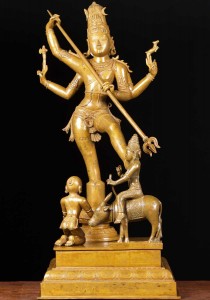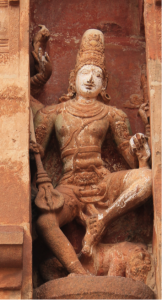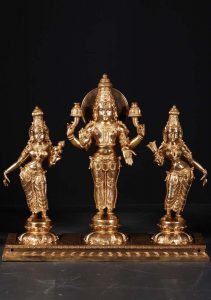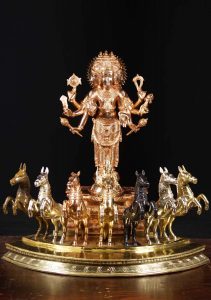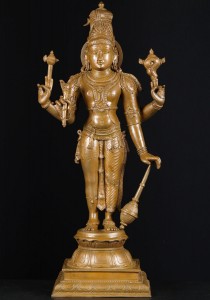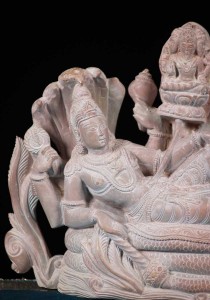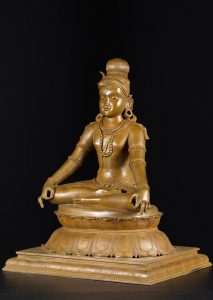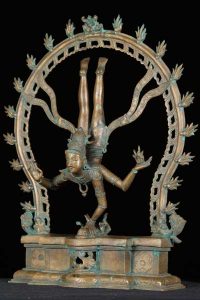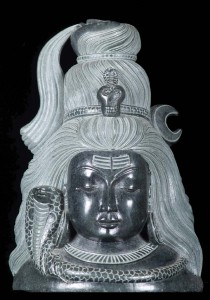Today marks the tenth day of the annual Navarathri festival. This tenth day is called Vijaya Dasami, which literally means “triumph on the tenth.”
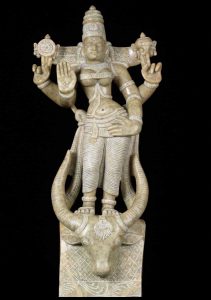
It is commonly believed that Goddess Durga vanquished the buffalo demon Mahishasura on this day. This victorious day also marks the day that Lord Rama defeated the demon king Ravana and made his journey home to Ayodhya. Some narratives of Rama’s story describe Rama as having invoked Goddess Durga through the powerful Chandi Puja, or worship of Durga in her passionate and furious form. Since Rama’s triumph over Ravana and Durga’s triumph over Mahishasura were both on this day, Vijaya Dasami has become a day synonymous with good beginnings. Many people around the world begin business ventures, musical study, dance, and other undertakings on this day. While Navarathri is a festival dedicated to the Goddess in her various forms, the tenth day of the festival is a day on which both Durga and Rama are worshiped. In North India, re-enactments of Rama’s life are portrayed in vivid theatre performances called Ram-Leela. At the end of the play, a larger than life effigy of the demon Ravana is burst into flames to signify Rama’s victory. Another key component of this day is the Ayudha Puja, or worship of weapons and instruments. Children place their books in front of their home shrine, while others pay respect to the implements that make their livelihoods possible. Cars, kitchen utensils, knives, hammers, chisels, computers, and other objects are cleaned and venerated by those who use them. In South India, there is a custom of erecting a doll display, which is worshipped for the nine days of Navarathi. On Vijaya Dasami, the dolls are symbolically put to sleep after last-minute visitors come and admire their beauty. These dolls, mainly of gods and goddesses, represent the same gods and goddesses that gave their power, Shakti, to bring Goddess Durga to life. After the gods and goddesses gave their power to Durga in order for her to vanquish Mahishasura, they became as lifeless as dolls. On the tenth day, after Durga killed the buffalo demon, she restored the life to the gods and goddesses and become reabsorbed into them. This idea is seen in action in Eastern India, where large idols of the Goddess Durga and her retinue are immersed on this day after five full days of worship. Wherever you find yourself in India, or abroad, this day is one of enjoyment and happiness. It marks the triumph of good over evil and reminds us that we must cultivate the good in our hearts, and have victory over our not-so-good tendencies.
~Svasti~

